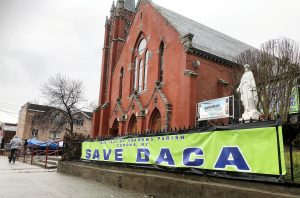By Stephanie Nebehay and Robin Emmott
GENEVA/BRUSSELS (Reuters) – Russia has recognized the existence of a cruise missile system that has prompted Washington to say it will quit the 1987 INF disarmament treaty, but has denied that it violates the pact, U.S. officials and NATO diplomats said on Monday.
Two weeks before the planned U.S. withdrawal from the treaty, which keeps nuclear-capable missiles out of Europe, Washington’s disarmament ambassador in Geneva said there was still time for Russia to destroy the system.
But after a session of the U.N.-sponsored Conference on Disarmament, Russian diplomat Alexander Deyneko told Reuters: “We shall not yield to any ultimatums like to liquidate or to eliminate (a) missile that doesn’t fall within the range of the treaty prohibitions.”
Russia had denied developing what U.S. intelligence calls the SSC-8/9M729 cruise missile system.
However, NATO diplomats said Moscow did now recognize its existence but argued that its range was within the 500-km limit set by the Intermediate-range Nuclear Forces treaty.
U.S. Ambassador Robert Wood said the system was a “potent and direct threat to Europe and Asia” as it had a range of 500 to 1,500 km (310-930 miles), contravening a treaty that is designed to prevent attacks at short notice.
“Russia must verifiably destroy all SSC-8 missiles, launchers and associated equipment in order to come back into compliance with the INF Treaty,” Wood said.
“Unfortunately, the United States increasingly finds that Russia cannot be trusted to comply with its arms control obligations and that its coercive and malign actions around the globe have increased tensions.”
After a meeting with Russian officials in Geneva last week, the United States said Moscow’s offer to save the treaty, negotiated by U.S. president Ronald Reagan and Soviet leader Mikhail Gorbachev, was not genuine because it could not be verified.
The impasse sets the stage for U.S. President Donald Trump to fulfill his threat to start withdrawing from the pact on Feb. 2, potentially allowing Washington to develop its own medium-range missiles.
The United States will still have six months to formally complete its withdrawal, however.
The U.S.-led NATO alliance said it had not given up on bringing Russia back into compliance. NATO’s 29 ambassadors will hold a special NATO-Russia Council with Moscow’s acting envoy to the alliance, Yuri Gorlach, in Brussels on Friday.
NATO diplomats told Reuters that European members of the alliance led by Germany hoped Washington would make a final push to convince the Kremlin to come into line, or possibly to renegotiate the INF to include China.
(Reporting by Stephanie Nebehay in Geneva and Robin Emmott in Brussels; Editing by Kevin Liffey)













